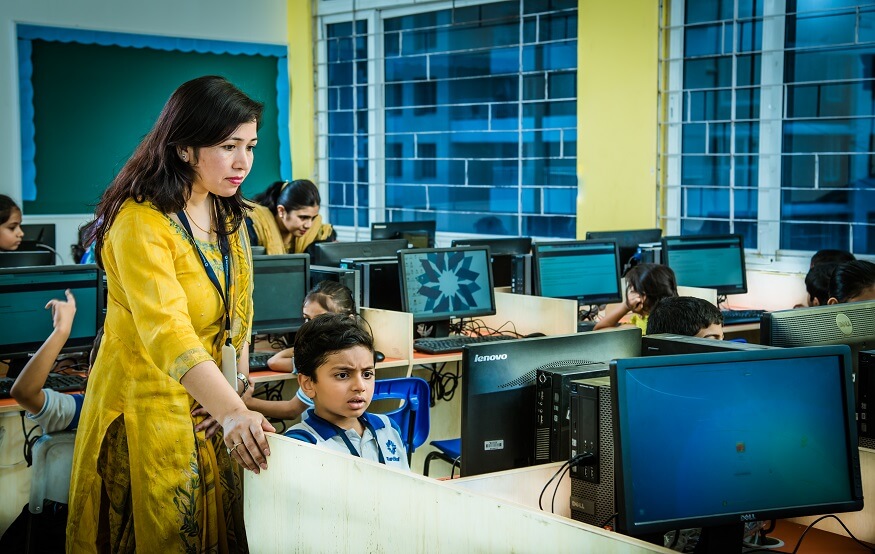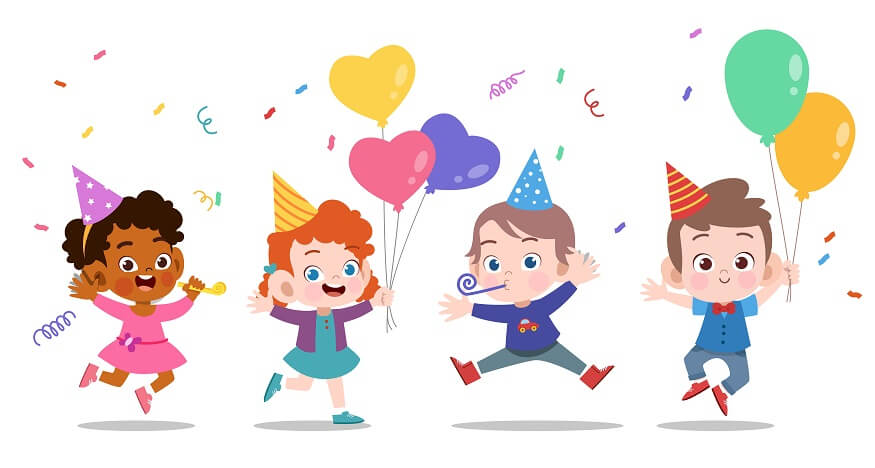It is due to the combination of computer science and robust datasets that we are able to use a range of applications, be it e-signatures or identification. From medical image analysis to anything we use and deal with today, it is basically done with the use of artificial intelligence, which is a field used to enable problem-solving in its simplest form. So, today we are going to have a look at AI a.k.a. Artificial Intelligence and whether AI is considered helpful for students.
AI encompasses the perception of intelligence, which helps to synthesize inferred information that is demonstrated by machines, as opposed to the intelligence displayed by other non-human entities.”
Mention below are some ways AI is used to enhance children’s learning ability today.
- Personalized Learning.
- Adaptive Assessments.
- Intelligent Tutoring Systems.
- Gamification of Learning.
- Virtual and Augmented Reality.
- Impact of Artificial Intelligence on Education.
- Use of AI in Education.
Basically, if asked, artificial intelligence is the imitation of human intelligence processed with the help of machines, especially computer systems, in the simplest terms.
In the world we live in today, it is nearly impossible to do away with AI or have a life that is not supported by AI in one way or another. The most fascinating types of artificial intelligence are based on the functionality of AI-based systems. AI can be categorized into the following types:
- Reactive Machines: are basically, AI systems that have no memory but are task specific, it means that an input always delivers the same output.
- Limited Memory: Means in its evolution the next type of AI has limited memory.
- Theory of Mind: which simply means that people have thoughts, feelings and emotions that affect their behavior. AI systems in the future will learn to understand to adapt that both humans and AI objects have thoughts and feelings.
- Self-aware: This phenomenon will occur when machines will not only be aware of the emotions and mental states of humans but of themselves too.
To understand the types of AI further let us have a look at some Artificial intelligence examples. Remember artificial intelligence basically involves replicating human intellectual processes through machines.
- Virtual assistance that is a part of operating systems.
- Web mapping platforms and consumer applications that help with traffic updates, weather forecast, transportation updates and locations.
- Software applications that aim to mimic human conversations through the medium of text or voice assist.
- Virtual assistants which aid in any form of digital assistance, to analyze preferences and organize actions.
These examples mentioned above are extremely helpful AI for students because they tend to enhance a students’ learning and development on another level that we may not even know of. So, mentioned below are some ways that AI helps to enhance kids’ learning today.
- It helps with personalized learning for children.
- It helps with adaptive assessments to aid the quick teaching methods to keep kids at par.
- It provides intelligent tutoring systems to enhance a child’s academic development.
- Learning gamification helps with a child’s strategic attempt to enhance systems and services, it promotes creative activity organization for kids.
- Virtual and Augmented Reality is for kids who enjoy the process of learning and get more involved, because the main benefit of an interactive learning experience is to learn the ability first-hand through the assimilation of the digital and real worlds.
- Impact of Artificial Intelligence on Education. AI for students has recently become necessary because it can help educators to create customized lesson plans and assessments that align with each student’s unique strengths and areas of opportunity. This improves a student’s engagement and motivation, and ultimately leads to better academic outcomes.
- Use of AI in Education, AI in education delivers an enhanced experience for both students and teachers. It offers several benefits, including improved accessibility, advanced tutoring, automated grading system and administration, and it helps with streamlined workflows. These provide students with high-quality education and relieve teachers of excessive stress and giving them more time to allocate to a student’s needs.
So, one may ask how AI for students promotes good learning? Applications such as chatbots which have enhanced artificial intelligence systems can easily guide students with personalized assistance. These chatbots can answer questions about course content and even structure for a student. This helps students keep track of their own learning while keeping them motivated and engaged in a very interesting form of learning.
The Artificial intelligence examples mentioned above can help children to learn new skills, explore their creativity, and become more independent and engaged in their learning. AI can be of great assistance to create interactive gaming programs and educational apps that help children gain more knowledge and understanding in the fast-paced world around them. The best way for kids to learn AI is through immersion, as it is the most effective method for learning artificial intelligence and machine learning. Young minds should make the best use of AI technology to train for new technology, test new systems, and build new machine learning models for better understanding that will help technology grow year after year. It is high time that our children understand how the world functions and what the future holds for them.
Since AI is used to automate tasks, learn and analyze information to make decisions, and to develop intelligent robots and self-driving cars. For example, all the assistance applications available at the tip of our fingers are powered by AI. They help automate tasks on our device, it recognizes speech to execute our commands, and finds information to answer our questions. There are several artificial intelligence examples for kids, but how they can use it to benefit depends entirely on the child. However, with power comes the risk of abusing the power available on our palm tops. Therefore, it is necessary for parents, teachers, and guardians to look out for any unpleasant behaviors or changes in our kids’ behavior.
Here at EuroSchool, we want our students to obtain the primary advantages of AI by making positive use to perform tasks, to enable the execution of complex tasks without significant outlays.










